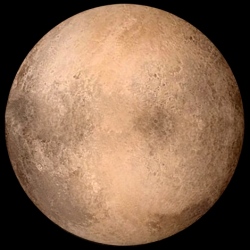
Nasa’s Kepler telescope has discovered more than 100 Earth-sized planets orbiting stars. It has also detected nine small planets within so-called habitable zones, where conditions are favourable for liquid water, and potentially life. The finds are contained within a catalogue of 1,284 new planets detected by Kepler.
Nasa said it was the biggest single announcement of new exoplanets. Space agency scientists discussed the new findings in a teleconference on Tuesday. Statistical analyses of Kepler’s expanding sample of worlds help astronomers understand how common planets like our own might be.
Dr Natalie Batalha, Kepler mission scientist at Nasa’s Ames Research Center in California, said calculations suggested there could be more than 10 billion potentially habitable planets in the Milky Way.
"About 24% of the stars harbour potentially habitable planets that are smaller than about 1.6 times the size of the Earth. That’s a number that we like because it’s below that size that we estimate planets are likely to be rocky," said Dr Batalha.
"If you ask yourself where is the next habitable planet likely to be, it’s within about 11 light-years, which is very close."
Future observatories such as the James Webb Space Telescope could examine starlight filtered through the atmospheres of exoplanets for potential markers of biology.
"The ultimate goal of our search is to detect the light from a habitable exoplanet and analyse that light for gases like water vapour, oxygen, methane and carbon dioxide – gases that might indicate the presence of a biological ecosystem," said Paul Hertz, director of astrophysics at Nasa.
Of the telescope’s finds to date, the planets Kepler-186f and Kepler-452b are arguably the most Earth-like in terms of properties such as their size, the temperature of their host star and the energy received from their star.
Dr Batalha said the new finds Kepler 1638b and Kepler-1229b were intriguing targets in the search for habitable planets. The Nasa Ames researcher said the Kepler mission was part of a "larger strategic goal of finding evidence of life beyond Earth: knowing whether we’re alone or not, to know… how life manifests itself in the galaxy and what is the diversity".
She added: "Being able to look up to a point of light and being able to say: ‘That star has a living world orbiting it.’ I think that’s very profound and answers questions about why we’re here."
Dr Timothy Morton, from Princeton University in New Jersey, said the overwhelming majority of exoplanets found by Kepler fell into the super-Earth (1.2-1.9 times bigger than the radius of Earth) and sub-Neptune sized (1.9-3.1 times bigger than Earth’s radius).
He noted that planets in this size range had no known analogues in our Solar System.
